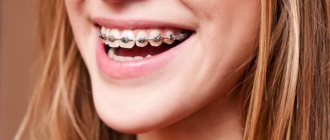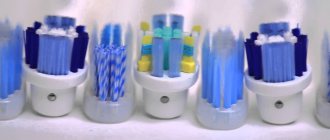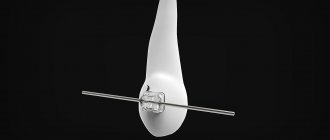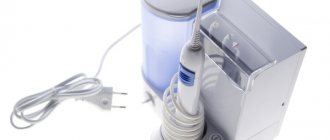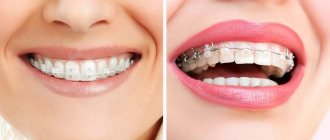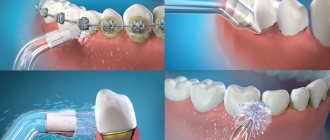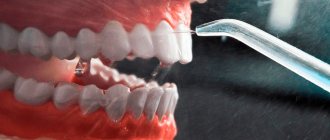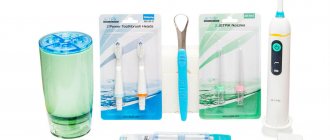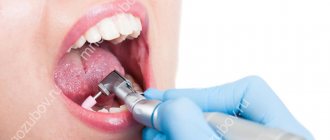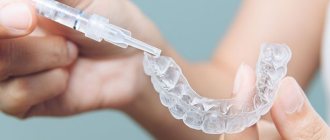Before choosing a nozzle for an oral irrigator, you should familiarize yourself with the different types of removable elements. When purchasing an irrigation device, it is often equipped with a minimum set (2-3 pieces) of universal nozzles. To maintain the oral cavity in proper hygienic condition, doctors recommend that each person acquire several special-purpose attachments. Alternating removable tips helps provide quality daily care and solve many dental problems.
Criterias of choice
Kinds. Depending on the design, there are two types of irrigators:
- Stationary. The devices operate from the mains and are used at home. They have many attachments and different operating modes, so they are suitable for the whole family.
- Portable. These irrigators are battery-powered and small in size, making them suitable for travel. However, their power is not as high as that of stationary models and they perform fewer functions.
Based on the type of pulsating jet in the device, three types of irrigators are distinguished:
- With a pulsating jet. The device creates a thin stream with short pulsations that create microhydraulic shocks. This type of device is recommended for people at risk of developing periodontitis or gingivitis.
- With microbubble technology. This type of device is considered the most effective, since the irrigator mixes air bubbles with a stream of water. This technology allows you to better remove plaque and food debris, as well as wash the nose and oropharynx for various diseases.
- With monostring. The device supplies a continuous stream of water; it does not require an electrical connection. However, without a special filter, it is impossible to use such a device by connecting it to a tap due to the poor quality of the water.
Cleaning technology. The first important point is the presence of pulsations of the water jet. These pulsations are so short (in different models of irrigators this figure ranges from 1200 to 2000 micropulses per minute) that they are unnoticeable. Pulsations create micro-hydraulic shocks, which make it possible to more effectively remove food debris and soft microbial plaque (compared to a water jet without pulsations). There is no particular difference between the models of irrigators that perform 1200, 1400 or 1800 jet pulsations. Those. in this case, “more” does not mean “better.” The second important point is the pressure of the water jet (measured in kPa), i.e. her pressure. The optimal indicator is 500-550 kPa, but there are also more powerful models of irrigators that produce water jet pressure even up to 870 kPa. This can hardly be called a competitive advantage, because... using such pressure is already quite painful for the gums. And patients, even with healthy gums, are unlikely to be comfortable using an irrigator with such a strong jet pressure. The third important point is the ability to regulate the pressure of the water jet. Moreover, it is necessary to have a smooth adjustment, i.e. selection from at least 4-5 preset levels. Reviews of dental irrigators very much depend, among other things, on the availability of smooth adjustments to the water pressure. It is optimal that the minimum level corresponds to a pressure of about 70 kPa, because You will have to start using the irrigator with a small pressure, gradually (from time to time) increasing it. The fact is that the standard water jet pressure of 500 kPa will be quite painful if you are just starting to use the irrigator. At the same time, lower water pressure will also allow the irrigator to be used not only by adults, but also by children, as well as people with sore gums. But strong pressure can, on the contrary, only increase bleeding of the gums. In addition, the presence of levels with low pressure of the water jet (and with a special nasal nozzle) will allow the irrigator to be used for rinsing the nasal passages with a weak saline solution, for example, in patients with rhinitis or sinusitis. The fourth important point is the presence of microbubble technology. This is an advanced technology developed by , but lesser-known companies have now begun to use it. This technology allows mixing of water flow and air bubbles, i.e. air aeration occurs (air content in water reaches 5%). As a result, the water stream will contain a large number of microbubbles, which will allow us to achieve two important things. Firstly, when microbubbles explode, they also create microhydraulic shocks, which contribute to even more effective removal of food debris and plaque. And secondly, air microbubbles saturate the water with oxygen, which has a bactericidal effect on pathogenic microflora. This is especially important for patients with gum disease, such as gingivitis or periodontitis. The fifth feature is the presence of different modes. Most irrigators have only 1 operating mode in the form of a pulsating monojet, but some models have additional modes. When you select the “turbo flow” mode, the built-in mini-turbine in the nozzle is activated, which begins to spin at a speed of 8000 rpm. As a result, a spiral-shaped jet stream is formed, which is optimal for gum massage.
Types of attachments for irrigators. Some irrigators have universal nozzles, others have whole sets of nozzles for all kinds of cases. In addition to universal ones, there are attachments for cleaning the tongue, for washing periodontal pockets, attachments for cleaning orthodontic structures (braces), attachments for cleaning artificial crowns and bridges, and attachments for cleaning implants. Also, some models have special nasal nozzles that allow you to rinse the nasal cavity with an irrigator, which is sometimes necessary in the treatment of rhinitis (including allergic origin) and sinusitis. Most manufacturers produce attachments that have different color indicators. This is very convenient, because... Each family member will have a nozzle of its own color, and will never confuse it with other people's nozzles.
Capacity. Stationary models hold an average of 400-1000 ml of water, and portable ones - from 150 to 300 ml.
If you are going to use the device while traveling, you can buy a compact type irrigator for implants and sacrifice the volume of the tank. For home and family use, it is better to opt for a more spacious model.
Nasal attachments
The most important procedure for the prevention of colds is cleansing the nasal cavity. With the help of nasal nozzles, mucus and contaminants are cleansed from the inner surfaces of the nose, which increases the protective functions of the epithelium and prevents the proliferation of pathogenic microorganisms. The nozzles are equipped with soft rubber tips that fit snugly to the nostril. There are nasal attachments designed specifically for children. The procedure for cleaning a new cavity must be carried out with caution - at the minimum power of the irrigator. For rinsing, it is necessary to use a saline solution at a concentration of 0.9% (saline solution). Plain water should not be used as this may cause bleeding.
The best manufacturers of oral irrigators
Not all companies developing oral irrigators match their technologies with the latest scientific knowledge in the field of dentistry. Because of this, only a limited group of manufacturers can be trusted. The list of the best includes:
- WaterPik is one of the most famous manufacturers of irrigators, which appeared in 1962 in the USA;
- B.Well produced using British technologies; this brand has been available in Russia for almost 13 years;
- Revyline is a domestic manufacturer of high-quality irrigators in various price segments;
- Donfeel is a Russian leader in the production of oral hygiene devices;
- Oral-B company originated in the USA and is still included in the ranking of the most famous international companies.
Differences from a toothbrush
When comparing the effectiveness of irrigators and regular brushes, there are several key factors to consider.
Degree of purification
The device cleans much deeper, allowing you to remove pieces of food stuck between your teeth, in chips or cracks. The effectiveness of the irrigator can be compared with the simultaneous use of dental floss and an electric brush.
Gentle care
The use of an electric toothbrush is contraindicated with some types of dental plates or braces. The irrigator is able to clean any structures in the oral cavity without damaging them. Thus, an irrigator is the only option for solving the problem of cleaning teeth in case of installed braces.
Freshness
An electric toothbrush certainly has a refreshing effect when used with the right toothbrush. However, using an irrigator allows you to achieve a similar effect with plain water.
In order to make your teeth whiter, it is preferable to use not an irrigator, but a brush along with whitening toothpaste
The best inexpensive irrigators for implants and crowns
B.Well WI-933
A small irrigator can be powered by a battery or from a home electrical outlet. Supplied with eight attachments, including those for implants and crowns, all tips rotate 360 degrees. The device operates in ten modes and produces a pressure of up to 862 kPa. A full battery lasts 50 minutes, so you can use the irrigator on the road for more than a week without recharging.
Advantages
- spacious 800 ml tank
- good battery capacity
- wide range of equipment
- ten modes are provided
Flaws
- no indicator of remaining battery capacity
- As the device discharges, the jet pressure decreases
Donfeel OR-820D compact
Inexpensive cleaner with 7 nozzles and 10 operating modes. The device is suitable for people with sensitive gums and teeth. It can be used in the presence of dental pathologies. A large number of attachments suggests family use. The irrigator perfectly removes food debris, tartar, plaque and caries. It prevents bleeding, strengthens gums and teeth, and normalizes blood circulation. The device’s nozzles help remove dirt from the most difficult to reach places, as well as provide light hydromassage to the gums and tongue.
Advantages
- 7 attachments: for implants, nasal, periodontal, standard, orthodontic, tongue
- High jet pressure (80-680 kPa)
- Ability to control water pressure
- High pulsation (up to 1700 movements per minute)
- Powerful battery
Flaws
- The tank lid is quite flimsy and can fly off.
- Noisy operation
B.Well WI-922
A stationary irrigator for crown care can operate continuously from the mains for more than half an hour without overheating. Supports ten modes and water flow adjustment. The set includes seven attachments, one of which is designed for implants. The jet pressure can be adjusted within the range of 207-827 kPa.
Advantages
- several attachments included
- you can adjust the pressure power
- ten operating modes are provided
- the irrigator does not vibrate and does not slide on the table
Flaws
- The scale on the pressure regulator is not the most convenient
- The water container only holds 600ml
VES electric VIP-009
The stationary irrigator VES electric VIP-009 is available in three colors: white-blue, black and white.
The models are equipped with a powerful motor, so the water flow for cleaning the interdental spaces is quite strong. The device comes with seven interchangeable attachments: standard (2 pcs.), periodontal, implantological, orthodontic, for tongue cleaning, for jet cleaning. Some of the nozzles can be stored under a lid on top of the structure, and the other part can be stored on a pallet in a specially equipped place. The water reservoir is removable, so it can be easily washed after each procedure. You can control the operation of the irrigator using the on/off button and the pressure pressure adjustment wheel (10 modes), which are located on the front of the body. Additionally, there is a button on the handle that shuts off the water supply to the nozzle. Specifications:
Power consumption: 18 W;
Power type: mains;
Jet pressure: 879 kPa;
Tank capacity: 0.6 l.
Advantages
- powerful jet
- many attachments
- pressure adjustment
Flaws
- very short power cord
Irrigator Matwave Clean Pro V–20
Powerful ergonomic irrigator operating in 10 different modes. It is used to clean tooth enamel by both adults and children. The device includes attachments for cleaning implants and for hydromassaging the gums and tongue. The water supply power is kept at 890 kPa. Users have the opportunity to build an individual pulsation level: from 800 to 1600 pulses per minute. The device is attached using a magnet. The irrigator itself has a liquid reservoir with a volume of 900 ml. This is enough to completely rinse your mouth without additional water intake.
Advantages
- Availability of attachments for tongue and implants
- 10 operating modes
- Volumetric water tank
- Easy controls
- Productive effect on the treated area, prevention of the development of caries, tartar, rapid removal of plaque
- Rotating the nozzles at different angles, removing dirt from areas inaccessible to the brush
Flaws
- Loud operation
Varieties
In order to satisfy the needs of device users, irrigators are produced in various configurations, with different specialized attachments. Irrigators are either stationary or portable. The stationary one can be installed in the bathroom, and the portable one can be taken with you on vacation or a business trip. There are models with the ability to adjust the mode and additional options, for example, with the generation of small bubbles for a softer and more effective cleansing. Some models of irrigators can be connected to a water supply, others operate from a built-in reservoir.
The best irrigators for premium implants and crowns
WaterPik WP-562/WP563 Cordless Advanced
The portable irrigator for dentures supports three jet pressure modes. Works without recharging for an hour and produces a flow pressure of up to 520 kPa. Supplied with implant nozzle as well as rotatable jet tips. Comes with a magnetic charger.
Advantages
- water pressure can be adjusted
- there is a special attachment for crowns and implants
- does not require recharging for more than a week
Flaws
- the pressure decreases with the charge level
- The tank holds only 180 ml
- high price
WaterPik WP-660 Aquarius Professional
A convenient stationary irrigator with attachments for implants and crowns operates at ten power levels. Supports massage and jet cleaning modes, and has a built-in timer that beeps every 30 seconds. Attention! The pressure in the WP-660 irrigator can be adjusted from 70 to 690 kPa. The device is suitable for caring for the most sensitive gums and fragile dentures.
Advantages
- many attachments included
- wide adjustment of pressure power
- convenient control
- there is a massage mode
Flaws
- relatively small tank
- there are complaints about the fragility of the device
- overpriced
WaterPik WP-672 E2 Ultra Professional
The Ultra Professional stationary irrigator is available in a black design.
It is equipped with a very quiet electric motor. To control the “Floss” and “Massage” modes, there is a button on the left side of the structure, in the same place there is a wheel for adjusting the pressure pressure (10 modes) and an on/off button. Additionally, there is a switch on the handle that turns the water supply to the nozzle on and off. The device comes with seven attachments: standard (3 pcs.), periodontal, implantological, orthodontic, brush attachment. The reservoir of this line of devices is very spacious, which allows you to avoid adding water during oral care. It is removable, so it can be easily washed after each procedure. The built-in minute timer allows you to control the time of the procedure, allocating 30 seconds to treat each row of teeth. Specifications:
Power type: mains;
Jet pressure: 70–690 kPa;
Tank capacity: 0.65 l.
Advantages
- high water flow power
- many attachments
- large water tank
Flaws
- unreliable power supply - may break after several months of use
WaterPik WP-100 Ultra / WP-112 Ultra
WaterPik WP-100 Ultra / WP-112 Ultra is a stationary, mains-powered irrigator. The kit includes a reservoir with a capacity of 650 ml, and 6 types of attachments: tongue cleaning, jet, periodontal (for gums), orthodontic (for braces), brush attachment, attachment for cleaning implants and crowns. The model has 10 jet modes, the jet pressure is adjustable from 35 to 620 kPa.
Advantages
- Powerful pressure that is easy to regulate
- Water tank is enough for one cleaning
- Reliability and long service life
- Different types of attachments included
- Availability of replacement handles with a hose and the ability to replace them without disassembling the device
- Quiet operation compared to other devices
Flaws
- The power cord is short, you have to use an extension cord
- There are no brackets for mounting to the wall
- Storage of additional attachments is inconvenient
WaterPik WP-300 Traveler
The convenient device is intended for stationary use, but has small dimensions. Thanks to this, you can take the irrigator on the road, especially since the manufacturer includes a special case in the kit. The set also includes attachments for tongue, jet mode, implants and crowns. The pressure can be adjusted from 70 to 550 kPa.
Advantages
- good packaging and travel case
- compact dimensions
- attachments for crowns and implants
- several operating modes
Flaws
- holds up to 450 ml water
- performance is low
- works only from the network
- price above average
The best irrigators for implants and crowns in the middle segment
WaterPik WP-462 E2 Cordless Plus
The WaterPik WP-462 E2 Cordless Plus portable irrigator has a compact design, thanks to the placement of a small water tank at the rear of the device (directly under the main control unit).
The model is made of durable plastic in a black design with gray buttons. A small control panel is provided to control the functions of the irrigator. There are two buttons on it - on/off the power supply and a regulator for two water supply modes. Additionally, the kit includes four attachments: implantological, orthodontic, for jet cleaning, and for cleaning the tongue. Each nozzle rotates 360º, which ensures maximum cleaning of all areas of the oral cavity. This irrigator is battery-powered, so it will need to be charged periodically via an AC adapter or using a USB cable. Specifications:
Working time: from 5 to 7 days;
Power type: rechargeable;
Jet pressure: 310–520 kPa;
Tank capacity: 0.21 l.
Advantages
- good pressure
- ergonomic design
- There are several attachments included
- compact size
Flaws
- small water tank
WaterPik WP-450 Cordless Plus
The compact irrigator for implants works for up to a week without recharging. The device has two modes, the maximum flow pressure is 520 kPa. The device is not the most powerful, but it fits easily in a travel bag. The set includes replacement tips - for crowns and implants, for cheeks and tongue, as well as orthodontic and jet tips.
Advantages
- battery holds charge for a long time
- The most necessary nozzles with rotation are provided
- light weight and compact dimensions
Flaws
- no charge indicator
- small tank
- only two operating modes
GESS Aqua Pro
The GESS Aqua Pro pulse irrigator is made of durable plastic in white with a blue water tank and edging parts of the same shade.
The nozzle storage compartment is located directly above the water tank. The device is equipped with eight nozzles: standard (3 pcs.), periodontal, orthodontic, for cleaning implants, for cleaning the tongue, for jet cleaning. Each of them rotates 360º, which makes it possible to thoroughly clean plaque and bacteria in the oral cavity. You can adjust the water supply pressure of the irrigator (10 modes) using a rotary wheel. You can turn the device on and off using a slide switch located on the handle of the irrigator. The automatic shutdown function of the device is activated after a three-minute operating cycle. It is necessary to protect the engine from wear and tear and ensure longer operation of the device. Specifications:
Power consumption: 12 W;
Power type: mains;
Jet pressure: 202–709 kPa;
Tank capacity: 0.6 l.
Advantages
- many attachments
- high power
- simple controls
Flaws
- strong pressure can knock off crowns
Donfeel OR-830
The stationary irrigator Donfeel OR-830 is made of durable plastic in white and blue colors.
On the left, under the capacious liquid reservoir, there is a compartment for storing nozzles. This compartment is equipped with an ultraviolet lamp to disinfect the attachments from bacteria after use. It is enough to turn on the lamp for 7 minutes once a week. The device is equipped with eight attachments: standard (3 pcs.), periodontal, orthodontic, nasal, for cleaning implants, for cleaning the tongue. The operation of the irrigator can be adjusted using two swivel wheels. The top wheel turns the device on and off and also turns on the ultraviolet light in the disinfection compartment. The lower wheel regulates the water supply pressure (10 modes). You can also limit the water supply to the nozzle using the button on the handle. Specifications:
Power consumption: 18 W;
Power type: mains;
Jet pressure: 60–680 kPa;
Tank capacity: 1 l.
Advantages
- many attachments
- strong pressure
- UV lamp for disinfection
Flaws
- Some models may leak water from the tank
How to use
The procedure is carried out according to a simple algorithm. It consists of the following:
- An antiseptic solution or filtered water is poured into the device reservoir.
- The nozzle of the device is clamped with the lips so that the liquid can flow freely from the oral cavity.
- Put the device into operation.
- The jet is directed to the upper part of the gums, and then smoothly transferred to the edges of the crowns or implants, in which case excess pressure will not be created on the pockets.
- The entire oral cavity is treated with an irrigator, moving from hard-to-reach corners to the front teeth.
- The selected area is cleaned with a stream of water for about 30 seconds, and then proceed to the next area.
At first, crowns and implants should be treated using the device in a gentle manner with low pressure. This will allow your gums to get used to using the irrigator. Then you can gradually increase the flow pressure and move on to more intense procedures. To prevent the solution from flowing into the throat, when treating the upper teeth with an irrigator, you need to lean over the sink
Periodontal attachments
These attachments are designed to care for problem gums. With various forms of periodontitis and periodontal disease, gum pockets located between the neck of the tooth and the gums become the most problematic area; food debris and plaque accumulate in them. Thorough and timely cleaning of these pockets blocks the development of the disease and reduces pain. The nozzles have soft rubber tips that do not injure your gums during cleaning. The thin jet produced by these nozzles has a gentle effect on inflamed areas of the gums.
